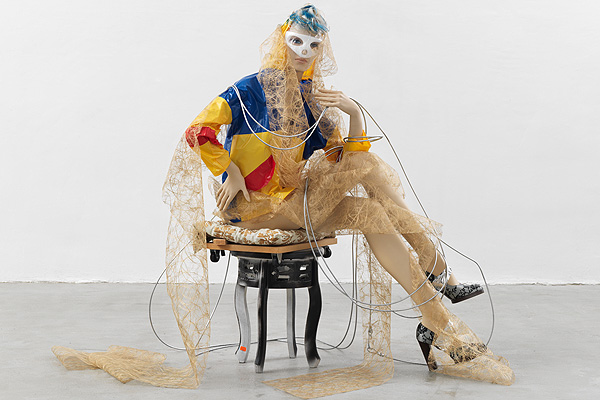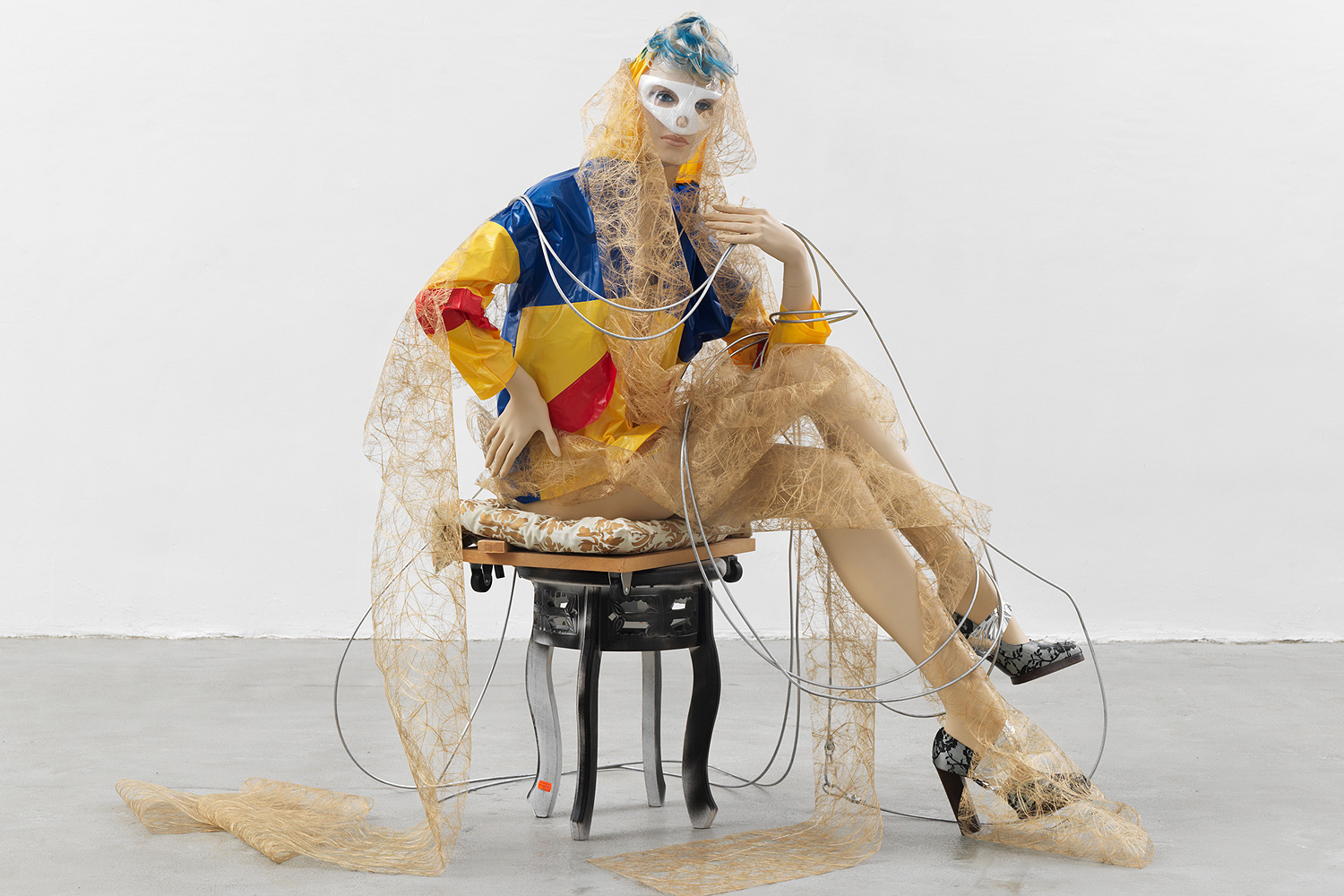The art world adores Isa Genzken. The influential German artist is famous for the quirky, nervy sculptures she's been making over the last three decades. Looking as if they had been dragged through a disaster scene, Genzken’s objects are often bombed-out, skeletal, and dripping with blood-red paint. Her current retrospective at the Museum of Contemporary Art lives hints of an intoxicating life lived behind closed doors, begging the question: Who is Isa Genzken?
Genzken lives in Berlin and doesn’t often do interviews. She even didn’t attend her own opening at the MCA last week. Yet she is everywhere in her artwork—starring in her own videos, her face popping up in photos, and her creative fire like a perfume lingering on the fragile sculptures.
But despite Genzken’s effort to keep an air of mystery, her private life was outed last year when German weekly magazine Der Spiegel wrote, “Genzken has bipolar disorder and goes through manic and depressive phases, and she is also an alcoholic.” Then, The New Yorker followed up with another heavy fact: Genzken’s grandfather was a Nazi.
The carefully curated exhibition doesn’t confront Genzken’s personal issues, favoring instead her artistic legacy. But, in an art gallery, everything can be read with double or triple meanings. That field of luggage and suitcases in the gallery? It could be the artist’s “baggage” that she carries all the time. That slot machine with Genzken’s portrait taped on the top? Pull the lever, so to speak, and see which Isa you get today.
In every series, there is Isa Genzken playing hide-and-seek among her artworks. If you want to know about Genzken, she leaves a trail of autobiographical candy for viewers to follow.
Ohr (1980)
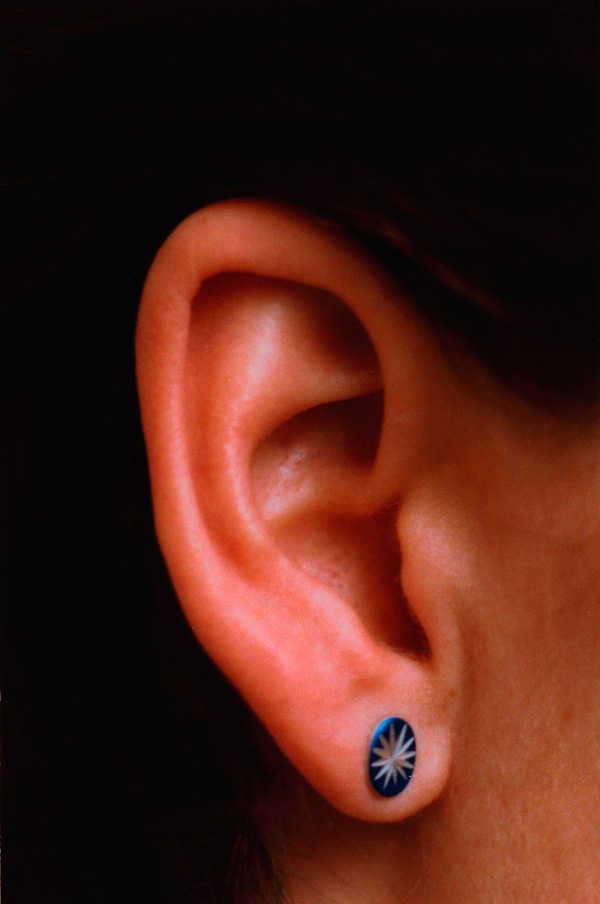
The first gallery contains a portrait of the artist’s ear. Is the ear a microcosm of the entire self, an anatomical keyhole? This ear portrait was photographed by Genzken’s then-husband Gerhard Richter.
My Brain (1984)
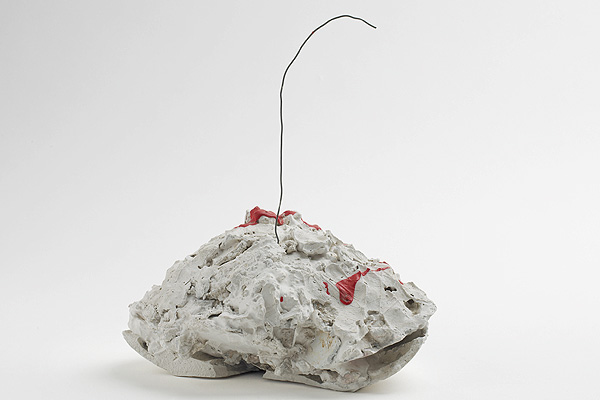
Hand-shaped from plaster, this brain-like lump rests on a pedestal, encased in a glass box. If identity can be located in this single human organ, perhaps it can be located in a sculpture of the same size, color, and weight. This one is visibly manhandled with the artist’s fingerprints, linking thoughts with the intelligence of the artist’s hand.
X-Ray (1991)
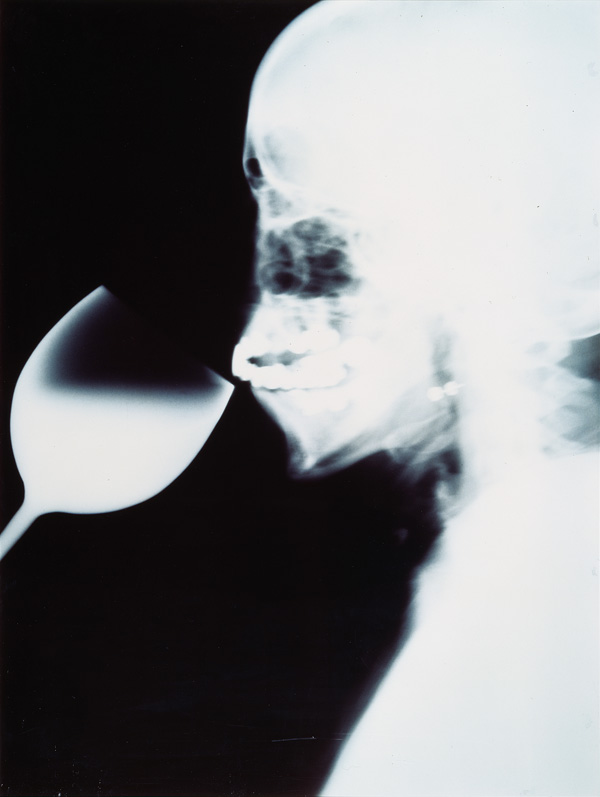
You didn’t need Der Spiegel to reveal Genzken’s alcoholism, the artist herself divulged it in a set of X-Ray self-portraits created over twenty years ago. The triptych show the artist drinking a glass of wine and directly from the wine bottle. Perhaps she's suggesting that wine is part of her being.
Chicago Drive (1992)
In 1992 Genzken had an important solo show at the Renaissance Society. Several of the pieces, many inspired by Chicago’s unique architectural achievements, have been remounted for the retrospective. There are the Chicago-style windows, for example, reduced into a minimalist sculpture. And there’s Genzken’s 26-minute video, Chicago Drive, which begins in Graceland cemetery and tours the city’s buildings. Chicago apparently impressed this artist, and the exhibit shares the love.
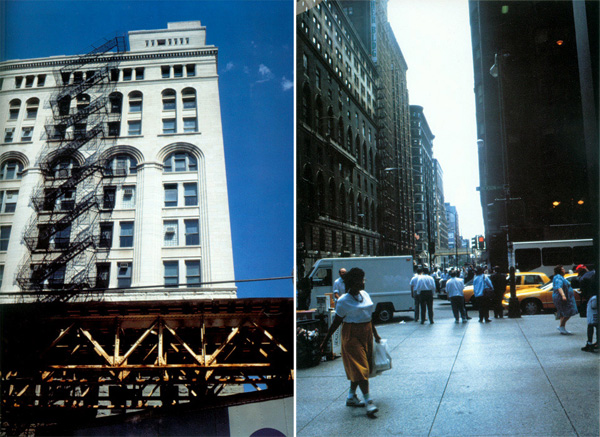
Schauspieler (2013)
This 60-minute video is a fake reality show where Genzken and her best pal Kai Althoff (another brilliant German artist who had his retrospective at the MCA in 2004) play themselves acting out hijinks in hotel beds, hookers, and whiny infants. Clearly they’re having fun, even when Genzken is playing the part of a person suffering from depression.
